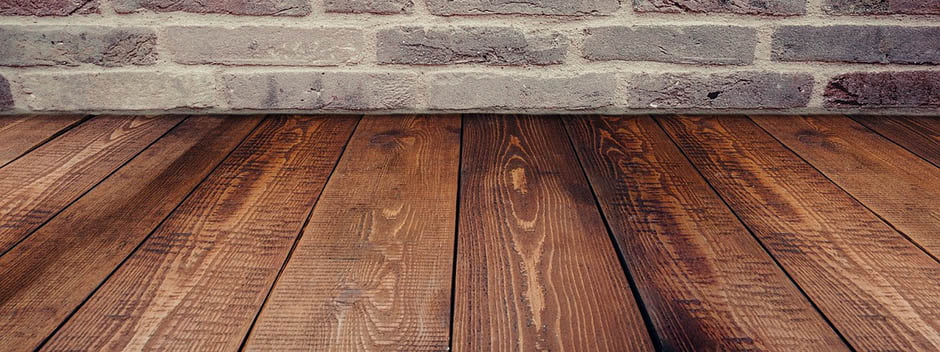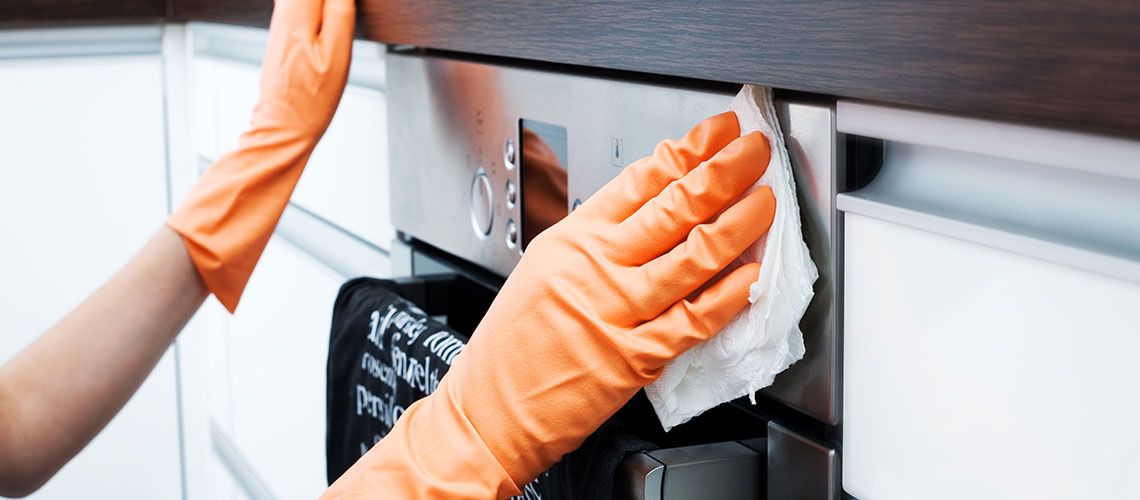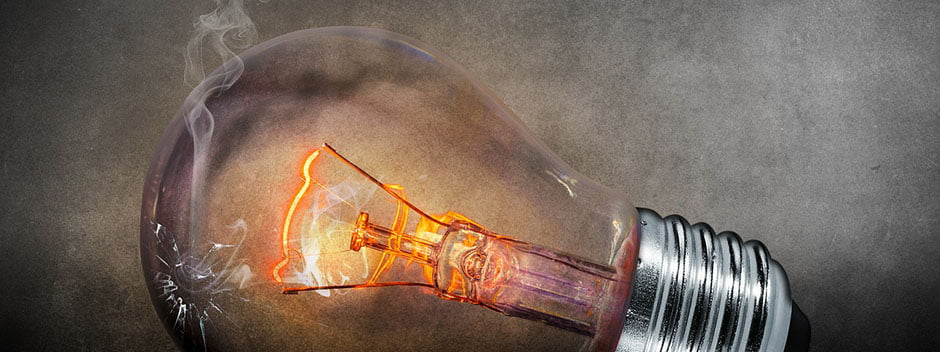The Search for the Best Home Flooring: Pros and Cons of 7 Popular Flooring Options

With so many different types of flooring out there, it’s difficult to see one and go “Yes, this is exactly the type of flooring I want for my home.” That’s where we come in. Let’s start with the golden rule of flooring that you need to apply each time you go out shopping for materials – always pick that which meets your practical needs first and your aesthetic preferences later.
To elaborate a bit on this idea, you will need to consider several factors, such as whether your shiny new flooring can withstand constant foot traffic, whether it’s easily maintained, whether it can crack under your furniture’s weight, and perhaps most importantly – whether it fits your budget. To dispel much of the confusion and help you decide on a particular style, we invite you to take a look at the strengths and weaknesses of 7 popular flooring options for home.
#1 Hardwood Flooring: Luxurious-Looking, But Highly Absorbent
This category covers any floorings that have been milled from a single piece of timber and are usually made out of oak, walnut maple, or hickory. Hardwood is pretty easy to clean, is available in a wide range of finishes and colours, and is incredibly resilient against general wear and tear. Its luxurious looks, on the other hand, can easily blend in with just about any room in your household, making it a very versatile option that also happens to have a decent resale value.
Speaking of price points, one of hardwood flooring’s biggest drawbacks lies in its costly and time-consuming labour. It’s also pretty loud to walk on and may dent under weighty furniture. Despite being made of wood, this type of flooring isn’t exactly cosy either as it doesn’t retain as much heat as it does liquids. It also needs occasional refinishing in high-traffic areas and the change in seasons may cause it to shrink and expand, so kitchens and bathrooms are a no-go.
#2 Cork Flooring: Eco-Friendly, But Fragile
Made from the bark of the cork oak, cork floorings provide good insulation and come with antimicrobial and mould-resistant qualities that make them a great choice for people with allergies. The wide gamut of colours and patterns allows you to customise your flooring to your heart’s content, and its soft and heat-retaining nature makes it a good choice for your renovated bedroom. Oh, and did we mention that this type of flooring is quite affordable as well?
With that said, there are a few negatives you should consider before buying this type of flooring. First things first – they lack in durability and may not always “pop back” after being pressured by a particularly weighty item. Next, we suggest getting some long and heavy curtains as direct sunlight can cause their colours to fade. Finally, they swell in standing water and can turn yellow with age, so you would probably have to replace the whole thing if it sustains heavy damage.
#3 Carpet Flooring: Comfortable, But Hard to Maintain
Carpets come in a wide variety of colours, patterns, materials, and textures, making them an incredibly versatile type of flooring. They have very good sound-absorbing qualities, turning carpets into a great option for busier areas around your house, for example staircases. They are also quite comfortable to walk on and can provide some warmth during the cold winter months. Their intricate patterns are an easy way to add some dimension to almost any room.
On with the negatives – carpet flooring is by no means DIY-friendly. It requires lots of specialised tools and often needs to be glued down or professionally cleaned. Also, while carpets are quite durable and can last you for years on end, their fibers act as 24/7 filters for dust and dirt, which can be a big problem for allergy sufferers. If you have pets, especially cats or dogs, you should also keep in mind that rugs tend to absorb their scent and can easily become damaged by their claws. Last, but not least – any stain you make will inevitably stand out like a sore thumb.
#4 Tile Flooring: Stylish, But Slippery
This type of flooring really doesn’t need any introduction as it has long since become the “standard” of almost every bathroom in existence. And rightfully so, seeing that it’s highly resistant to water and stains come off almost immediately. It is also offered in an impressive range of shapes, sizes, colours, and materials, examples of the latter being marble, porcelain, travertine, slate, granite, and more. Lastly, they are a really budget-friendly option and many DIY enthusiasts prefer this flooring variation when it comes to kitchens, bathrooms, or living rooms.
Unfortunately, not everything is rosy with this type of flooring, ether. For starters, walking around in anything but slippers will cause a clamorous wave of echoes. But if you do wear slippers, beware of water as it can make the tiles extremely slippery. They are also quite cold to the touch and you would probably have to invest extra money to equip your room with efficient heating systems. Lastly, the white grout in between each tile will slowly get stained with time and you will need to clean it on a regular basis to prevent noticeable discolouration and bacterial growth.
#5 Laminate Flooring: Easy to Install, But Finicky to Repair
In the world of flooring, laminate is awfully similar to a “chameleon” – it can mimic stone, wood, and tile appearances so convincingly that you would often be hard-pressed to tell it from the real thing! Pet owners would be also happy to learn that laminate is quite resistant to scratches and stains, while its durable nature makes it suitable for foyers, living rooms, and other high-traffic areas. It’s also quite easy to install (even over old flooring) and makes little to no sound.
Yes, laminate is good… but it’s not perfect. The installation alone is quite expensive, and if you opt for realistic “wood simulations”, it could easily cost you almost as much as the real deal! As with many flooring types, water leaks are also a huge issue, so keep tabs on your refrigerator or washing machine at all times. Because if your laminate gets damaged, you will have to replace the whole segment – it’s fake wood, so sanding or refinishing is not an option, remember?
#6 Vinyl Flooring: Affordable, But at a Cost
A synthetic polymer, vinyl floorings are flexible, non-porous, and perhaps the easiest to install. Similar to laminate, it can be “disguised” as wooden planks or granite tiles with great success and can be glued or nailed over a subflooring for a quick and dramatic change in your home’s appearance. Unlike its brethren, this flooring is completely water-resistant and is ideal for your laundry room or bathroom, partly because it can also muffle a lot of the sound.
The fact that vinyl flooring is the cheapest type of floor covering is not coincidental. Its incredibly easy to dent or tear its surface (especially with a sharp object), and is a real challenge to clean or repair. And while it may be water-resistant, it’s by no means waterproof. So when water inevitably sneaks in between the seams, it will create the perfect conditions for mildew growth and will cause your flooring to lift. Not something you want to deal with, that’s for sure.
#7 Stone Flooring: Extremely Durable, But Expensive
Steeped in rich history, stone flooring was first invented in Ancient Egypt as early as over 5000 years ago in the construction of monuments and palaces, which should already be a testament to its exceptional durability. The most common types of flooring are made of limestone, marble, slate and, of course, granite and require little to no maintenance. Untouchable by scratches, dents, and moisture, they are a great fit for your new kitchen, bathroom, or dining room. Stone flooring also ages well and will improve its appearance (and sale value) as time goes on.
But all of this comes at a steep price. This is the most expensive of all the flooring options for your home we’ve discussed so far, and that’s not even including the labour-intensive installation! You should also keep in mind that stones (especially those that come with glossy finishes) can be quite slippery, some of them tend to act as stain and dirt magnets, and absolutely all of them are cold to the touch and harsh to step on. Thus, we strongly recommend avoiding this type of flooring if you happen to live together with elderly people.
Duties & Responsibilities of Professional Cleaners by Job Descriptions
At Star Domestic Cleaners, we know that professional cleaning services in recent years are more and more of a necessity rather than a luxury.


